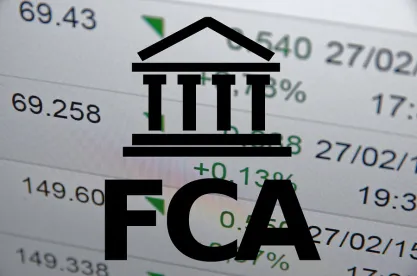2016 was a big year for the False Claims Act (FCA). Total government recoveries were up; total new matters filed were up; and total new government-led FCA matters were up. The Supreme Court issued multiple decisions relating to the FCA, including one—Universal Health Services, Inc. v. U.S. ex rel. Escobar, 136 S. Ct. 1989 (2016)—which will have dramatic ramifications for litigation relating to the FCA’s materiality standard. The Supreme Court also denied certiorari in an important FCA case—U.S. ex rel. Purcell v. MWI, Inc., 807 F.3d 281 (D.C. Cir. 2015), reh’g en banc denied, cert. denied, 580 U.S. ___ (2017)—in which the D.C. Circuit held that when a defendant adopts an objectively reasonable or plausible interpretation of an ambiguous regulatory term and the agency has not warned the defendant away from its interpretation via authoritative guidance, the FCA’s scienter element cannot be established. (Note: We previously covered the Purcell decision on our FCA blog. You can view our article, here.) Although some of these developments may seem concerning, there is plenty of silver lining here for government contractors.
First, the DOJ statistics, which we previously covered, suggest the government has been unsuccessful in recovering from government contractors under the FCA. The DOJ statistics divide recoveries into three groups: (1) recoveries based on contracts with HHS, (2) recoveries based on contracts with DoD, and (3) other recoveries not based on the first two categories. The first and third categories are by far the largest, with the first category owing its significant haul to Medicare fraud and abuse; the third category owing much of its size to recoveries against financial institutions in response to allegations of impropriety arising out of the mortgage crisis. The second category, contracts with DoD, constitutes only a small fraction ($122 million of the $4.76 billion total) of the total FCA recoveries from 2016. Omitted completely from the statistics is any mention of recoveries against government contractors from civilian agencies; any comparison of amounts recovered versus amounts claimed against government contractors; or any discussion about how successful (or not) government contractors have been in litigating FCA cases. This latter point is particularly important because of recent case developments from Escobar and Purcell, which will likely tip in government contractors’ favor over time for the reasons we discuss below.
Second, the Supreme Court’s decision in Escobar will change how government contractors approach FCA litigation. When the government or a relator brings a FCA action against a government contractor, it usually does so under a false certification theory. Common allegations under the false certification theory include allegations that the government contractor violated contractual requirements or allegations that the government contractor violated regulatory requirements, such as those imposed by contractors under the Trade Agreements Act (TAA), the GSA’s Price Reduction Clause, or the Small Business Act. To succeed under an implied certification theory, the government or a relator must show that the false certification was “material” to the government’s decision to pay. Escobar described materiality as a “demanding” and “rigorous” standard. Universal Health Servs. v. U.S. ex rel. Escobar, 136 S. Ct. 1989, 2002-2003 (2016). Very few if any government contracts FCA cases are tried. But if Escobar’s holding is to be followed by the lower courts, then government contractors have good reason for taking FCA cases to trial knowing that the government will need to prove materiality against a more “demanding” and “rigorous” standard.
Third, the holdings in Escobar and Purcell limit the government’s ability to use the FCA as a “gotcha” to extract big settlements from government contractors. As the Court said in Escobar, the “False Claims Act is not ‘an all-purpose antifraud statute,” or a vehicle for punishing garden-variety breaches of contract or regulatory violations.” Escboar, 136 S. Ct. at 2002. And in Purcell, the D.C. Circuit made clear that the knowledge/scienter element of FCA liability cannot be established from non-compliance with a regulation or contractual term based on a defendant’s reasonable interpretation of an ambiguous regulatory or contractual provision. The Purcell court found an exception, however, in the instances in which the government has published “interpretative guidance ‘that might have warned [the defendant] away from the view it took.’” U.S. ex rel. Purcell v. MWI, Inc., 807 F.3d 281, 288 (D.C. Cir. 2015), reh’g en banc denied, cert. denied, 580 U.S. ___ (2017). Taken together, Escobar and Purcell make it more difficult for the government to extract settlements from government contractors arising from mere breaches of contract terms or regulatory violations.
It may take some time before the true effects of Escobar and Purcell are apparent. Nevertheless, we think that the combined holdings of Escobar and Purcell will likely make it harder for the government to succeed in FCA litigation against government contractors. Escobar raises the materiality hurdle, while Purcell makes it more difficult to establish that a defendant knowingly violated an ambiguously worded regulation or contract provision. It would not be at all surprising if in 2018 or 2019 the DOJ statistics show a drop in recoveries against government contractors thanks to these two very important decisions.




 />i
/>i

